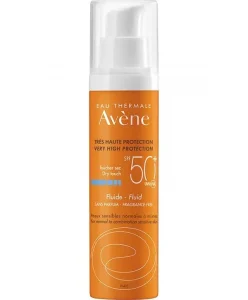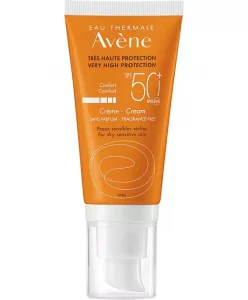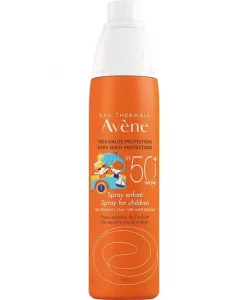
Summer is just around the corner, which means it’s time to break out the best sun protection for the face. Experts recommend protecting your skin with SPF all year round, even on cloudy days. And now that you’re likely to spend more time outside in the sun, it’s the perfect time to start thinking about your sun protection strategy.
To understand everything about sunscreens, we asked the dermatologist Dr. Dina El Kattan to break it all down and help us navigate the mass of products so you can make an informed choice about which protection is best.
What is the sun protection factor?
SPF refers to the sun protection factor. According to Dr. Dina El Kattan, SPF is a measure of the amount of solar energy (UV radiation) needed to produce a sunburn on protected skin compared to the amount of solar energy needed to produce a sunburn on unprotected skin.
It is important to note that SPF only protects against UVB rays, which are responsible for “reddening” of the skin or surface burns. SPF does not include UVA rays. This is why it is important to choose a high SPF as well as high UVA protection. Such sunscreens will be labeled “broad spectrum”.
When should I apply sunscreen and how should I apply it?
Dr. Dina El Kattan advises applying sunscreen every day! The best practice is to apply it 30 minutes before heading outside to allow the sunscreen to bind to your skin. She recommends reapplying it every two hours of exposure and immediately after swimming or excessive sweating. Even on cloudy days, up to 80% of the sun’s UV rays reach your skin.
Make sure you apply enough sunscreen. According to Dr. Dina El Kattan, use one ounce (a handful) to cover your entire body. She explains that you should use it on all areas of your skin exposed to the sun, including your ears, back, shoulders, and the back of your knees and legs.
Your skin tone should not determine how much sunscreen you should apply. Everyone, regardless of skin color, should apply enough sunscreen to ensure full protection.
How do physical and chemical sunscreens differ?
Physical and chemical sunscreens refer to the active ingredients used.
1- Physical sunscreens
Physical sunscreens, also called mineral sunscreens, use the minerals titanium dioxide and zinc oxide to block the sun’s rays before they penetrate your skin. This type of sunscreen is deposited on the skin, so it is more likely to fade. However, it is photostable, which means it does not degrade or become ineffective when exposed to sunlight.
2- Chemical sunscreens
Chemical sunscreen ingredients, such as avobenzone or oxybenzone, work differently: they absorb UV rays before they can harm your skin. This type of sunscreen is absorbed into the skin, which is why manufacturers often include it in skin care products and makeup.
Should I be concerned about harmful ingredients in my sunscreen?
The active ingredients in sunscreens are subject to rigorous safety testing by the FDA. That said, chemical absorbers are more likely to cause skin irritation. If you have eczema or rosacea or are prone to allergic reactions, choose sunscreens containing zinc oxide and titanium dioxide. Dr. Dina El Kattan reports that the FDA has proposed two ingredients that are “generally recognized as safe and effective” (GRASE). These ingredients are: titanium dioxide and zinc oxide. She also reports that the FDA has suggested two other ingredients that are not GRASE: PABA and trolamine salicylate, which we recommend you avoid.
Since fragrances are also irritating to many people, it is best to opt for a physical sunscreen that is also fragrance-free and hypoallergenic.
What is the best sun protection for the face?
The skin of the face is thinner and more vulnerable than the skin on the body. That’s why it’s worth investing in a sun protection product that is specifically formulated for the face.
Protecting your face from the sun is an absolute must. Luckily, applying sunscreen to the face is easy and can be perfectly integrated into your skin care routine. If you’re wondering why facial sunscreen should be part of your routine, you should know that experts say skipping sunscreen is dangerous for your skin.
When it comes to appearance, the sun’s UV rays can cause problems such as discoloration, fine lines, and wrinkles. But more importantly, overexposure to UV rays puts you at a huge risk of developing skin cancer. UV rays even penetrate windows. That’s why it’s essential to wear sunscreen on your face every day, even if you’re staying at home.
It’s also crucial to apply enough SPF. We recommend looking for a broad-spectrum SPF of 30 or higher, and reapplying it every two hours. Don’t skimp; apply a generous layer. Smooth it on rather than rubbing it in. Women should apply sunscreens under makeup.
Sunscreens are safe for children over 6 months of age. If used regularly during childhood, they can prevent skin cancers later in life.
In our guide to the best sun protection for the face, we recommend the following products:
For normal to combination skin:
Eau Thermale Avène Very High Protection Fluid SPF 50+
For dry skin:
Eau Thermale Avène Very High Protection Cream SPF50+
For children’s sensitive skin:
Eau Thermale Avène Spray for Children SPF 50+
Many people wonder if sunscreen lightens the skin, but Dr. Dina El Kattan asserts that it does not. “In the long run, sunscreen prevents sun damage, tanning, freckle formation and darkening, hyperpigmentation, and even skin cancer. So yes, it protects your natural skin tone from sun damage, but it can’t make your skin lighter or darker – it can’t change your natural skin tone,” stresses Dr. Dina El Kattan.
How to protect your skin from the sun?
Dr. Dina El Kattan offers the following tips for protecting your skin from the sun:
- Use sunscreen every day, even if the weather is cloudy.
- Use a lip balm or lipstick that contains sunscreen with a sun protection factor (SPF) of at least 30.
- Choose a broad-spectrum sunscreen that protects against both UVA and UVB rays. Make sure it’s water-resistant and has an SPF of 30 or higher.
- Reapply the sun protection cream every two hours. Reapply every hour if you are swimming or sweating.
- Be extra careful around water and sand. These surfaces reflect the sun’s harmful rays, which can increase your risk of getting a sunburn.
- Keep babies under 6 months old completely covered and in the shade.
- Limit sun exposure between 10 a.m. and 4 p.m. That’s when the sun’s rays are strongest. Apply the shadow rule: if your shadow is shorter than you, the sun’s rays are strongest and you need to find shade.
- If possible, wear a long-sleeved shirt and long pants. Dark, tightly woven clothing blocks more sun than white clothing or loose fabrics. For extra protection, look for clothing made with special sun protection materials.
- Add a hat that protects your face, neck, and ears and a pair of sunglasses. Sunglasses with lenses that absorb 99% to 100% of UV rays offer the best protection for your eyes and surrounding skin.
- Be even more careful if you are taking medications that can make your skin more sensitive to the sun. These include certain types of antibiotics, anti-inflammatory drugs, antifungals, blood pressure medications, and chemotherapy.












